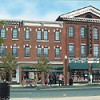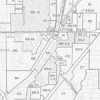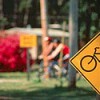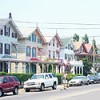Smart Growth in Your Town
So now you’ve learned all about smart growth and you know that smart growth means adding new homes, new offices and businesses, and new jobs to New Jersey’s economy in a way that enhances the communities where we already live – without requiring higher taxes, adding to our road and traffic woes and without consuming or polluting our remaining farmland, beachfronts, woodlands and open spaces. But how do you know whether or not your own community is “smart?” And how do you know where you need to make improvements? These smart growth scorecards are user-friendly tools to help citizens and decision-makers evaluate development proposals and municipal planning in terms of smart growth criteria. They’re easy to use, and can help identify smart growth strengths and weaknesses where you live.
 Development Scorecard
Development Scorecard
This scorecard, designed by New Jersey Future, is a tool to help citizens and local officials evaluate development proposals and the potential benefits and drawbacks they may bring to the community. This scorecard is best applied to larger projects, which tend to have larger implications for smart growth, but is a useful exercise for most development proposals. It is important to note that local zoning and accompanying community requirements may not permit an applicant to build to the standards set in this scorecard. In such cases, those concerned about bringing smarter growth to their community will want to work with local leaders on improving zoning and local master plans to encourage smart growth.
 Municipal Planning Scorecard
Municipal Planning Scorecard
This scorecard, designed by New Jersey Future, is a way to help citizens and local officials evaluate whether or not a municipality is “growing smart,” and whether or not the right tools are in place to do so. A lack of smart growth on the ground often reflects problems with local plans and regulations. As a result, some of the questions in this survey may require a look at local planning documents and/or the zoning ordinance; others can be answered by observation. It may also be necessary to speak directly with your local planning and zoning office.
 Pedestrian-Friendliness Scorecard
Pedestrian-Friendliness Scorecard
This scorecard, designed by the Voorhees Transportation Policy Institute at the Rutgers University Bloustein School of Planning and Public Policy, is meant to help citizens and local officials evaluate whether or not their community is pedestrian-friendly, and whether the right tools are in place to make it so. This scorecard helps answer the questions, “How walkable are our communities?” and “How can we make our communities safer and more enjoyable places to walk?”
 Bikeability Checklist
Bikeability Checklist
This scorecard, from the Bicycle and Pedestrian Information Center, evaluates how bikeable your community is. Find out how your town rates! Read over the questions in this checklist and then take a ride in your community, perhaps to the local shops, to visit a friend, or even to work. See if you can get where you want to go by bicycle, even if you are just riding around the neighborhood to get some exercise. Then, learn how to begin to improve those areas where you gave your community a low score.
 Walkability Checklist
Walkability Checklist
This scorecard, also from the Bicycle and Pedestrian Information Center, evaluates how walkable your community is. Take a walk and use this checklist to decide if your neighborhood is a friendly place to walk. Find out how your town rates! Then, learn how to begin to improve those areas where you gave your community a low score.
 Community Design Scorecard
Community Design Scorecard
This scorecard, designed by EcoCity Cleveland, evaluates communities on their attractiveness and livability. EcoCity Cleveland held a workshop where participants discussed why they liked some places better than others; they then derived 47 basic principles to describe the features of the places they preferred. This scorecard takes these 47 principles and uses them to evaluate how well-designed your community is.











